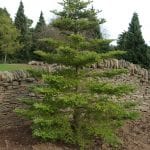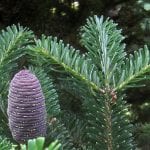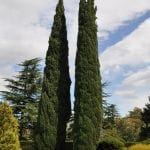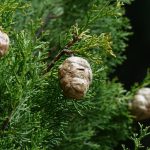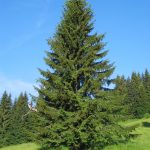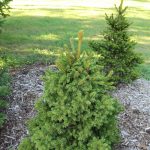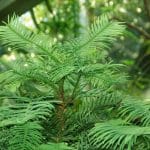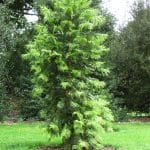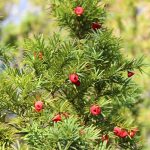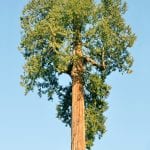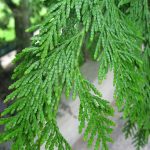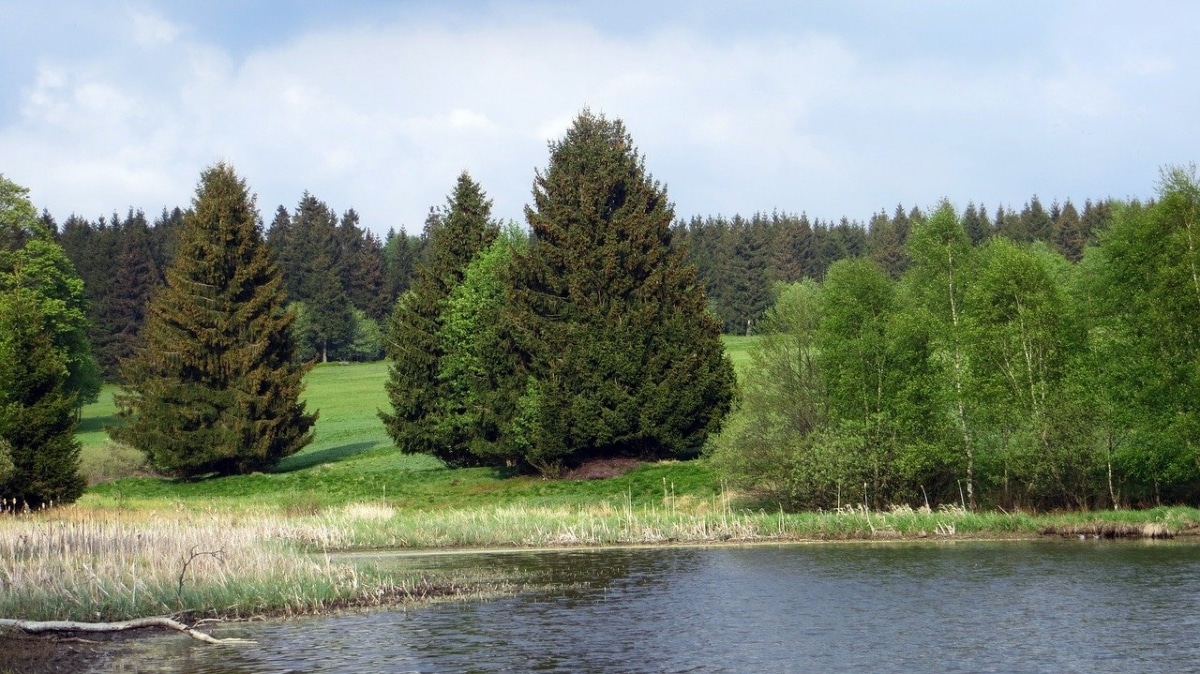
In the world we can find many types of conifers, very special trees that tend to grow slowly but are capable of living for millennia. Gardeners plant them especially in large areas, since their roots tend to have a great development and, therefore, they require a lot of space; although there are also species that can be worked as bonsai.
While you may think that all conifers are practically the same, and are in fact very similar to each other, there are characteristics that make them different, unique.
Korean fir (Abies koreana)
- Image - Wikimedia / Nick
- Image - Wikimedia / Gunnar Creutz
El Abies koreana it is an evergreen conifer native to South Korea. Reaches a height of 10 to 18 meters, with a trunk of only 70 centimeters in diameter. Its leaves are linear, light green in color, and barely 2 centimeters long. The cones are 7 centimeters long by 2 centimeters wide, and turn purple when they finish maturing.
It is in danger of extinction. Resists up to -20ºC.
Cypress (Cupressus sempervirens)
- Image - Wikimedia / Lazaregagnidze
El Cupressus sempervirens it is an evergreen conifer that grows in the Mediterranean region. Its height is 25-30 meters, and develops a straight or slightly sloping trunk depending on the conditions in which it is found. The leaves are scale-shaped and green. Its cones are cylindrical, about 2-3 centimeters in diameter, and brown when ripe.
It has a life expectancy of 1000 years. It grows in generally clay and well-drained soils. Withstands frosts down to -18ºC.
Spruce (Picea abies)
- Image - Wikimedia / Qgroom
- Image - Wikimedia / Aleksandrs Balodis
La Picea abies is a conifer native to central and eastern Europe, which reaches a height of between 30 and 50 meters. It has a pyramidal crown with green acicular leaves. The cones or pineapples are hanging, ovoid in shape and measure between 10 and 18 centimeters long when they finish maturing.
Their life expectancy can exceed 4000 years. Of course, it is a plant that needs a temperate and even cool climate, as it does not tolerate hot summers (30ºC or more) or droughts. Resists up to -20ºC.
Canary Island pine (Pinus canariensis)
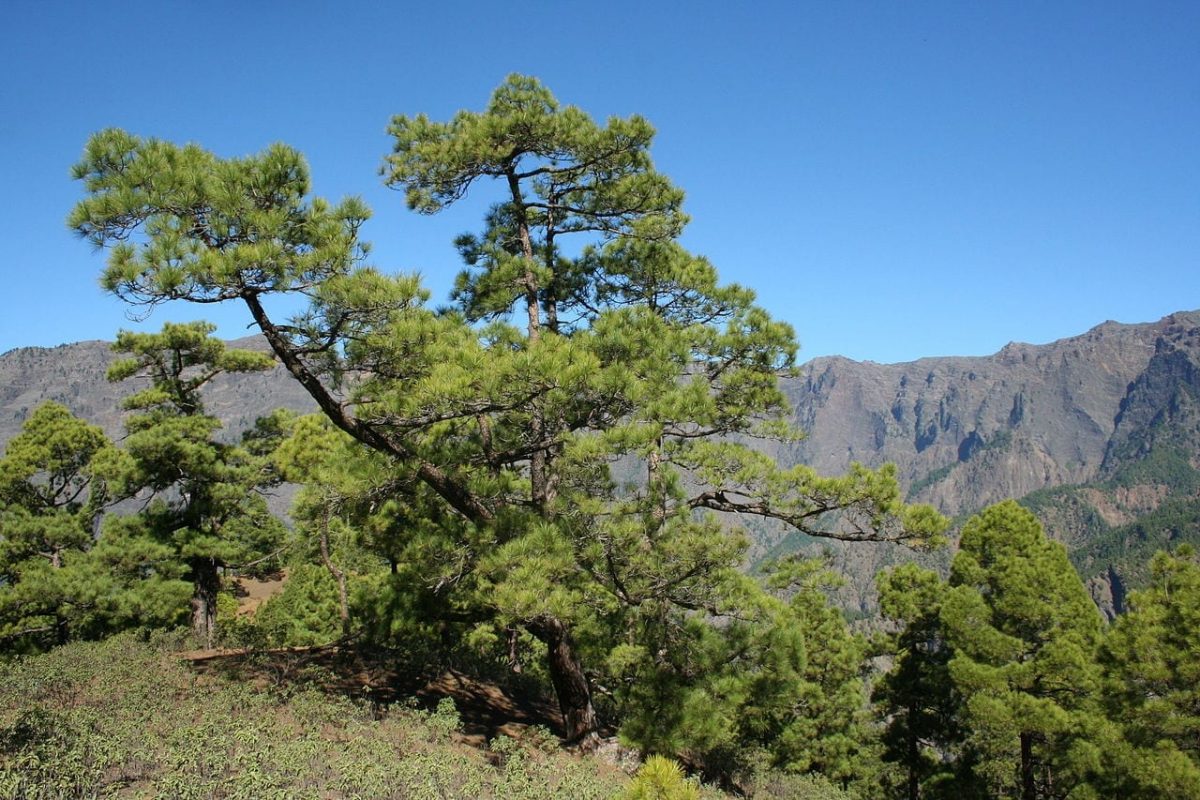
Pinus canariensis - Image - Wikimedia / Victor R. Ruiz from Arinaga, Canary Islands, Spain
El Pinus canariensis It is, as its name suggests, a native species of the Canary Islands (Spain), where it is considered a natural symbol of the island of La Palma. Reaches a height of 40-60 meters, having a trunk of up to 2,5 meters in diameter at most. The leaves are acicular, green and remain on the plant for a long time. Pineapples take two to three years to mature, but when they do, they are 12 to 18 centimeters long by 8 to 10 centimeters in diameter.
It is a fire-resistant species, capable of regrowing relatively quickly after a forest fire. It resists frosts down to -6ºC.
Paraná pine (Araucaria angustifolia)
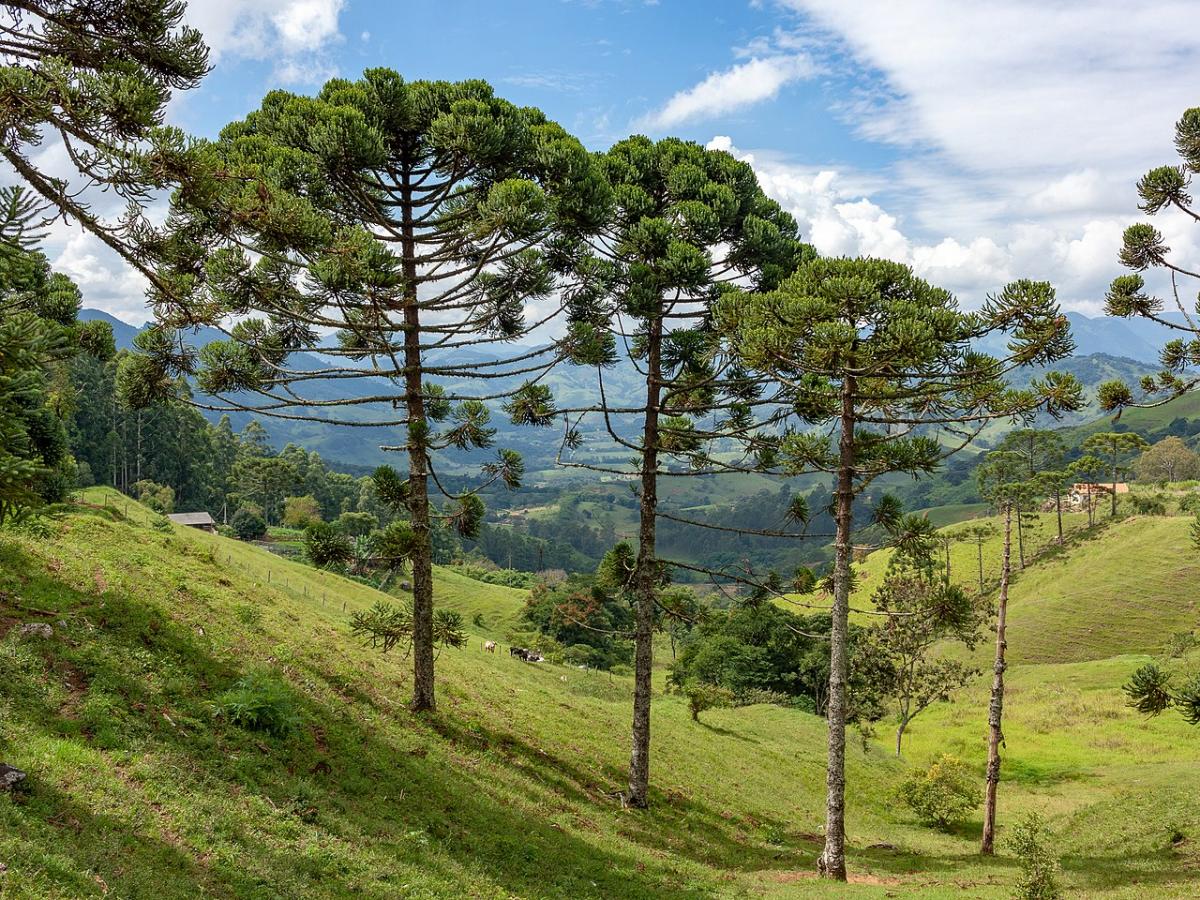
Image - Wikimedia / Webysther Nunes
La Araucaria angustifolia It is an evergreen conifer native to South America, specifically Brazil, where the first fossils dating back 200 million years were found. Today it is also growing in Argentina, Paraguay and Uruguay. Reaches 50 meters in height, and develops a straight and thick trunk up to 2,5 meters in diameter. The branches are very characteristic, since they sprout in such a way that they acquire the shape of a candelabrum. Its leaves are acicular, dark green, and leathery. Its male cones are oblong, while the female ones are globose.
It is a critically endangered species by the International Union for Conservation of Nature (IUCN). Resists up to -7ºC.
Wollemi Pine (Wollemia nobilis)
- Image - Wikimedia / Fritz Geller-Grimm
- Image - Wikimedia / Architeuthis Dux
La wollemia nobilis it is the only species in the genus Wollemia. It belongs to the Araucaria family (Araucariaceae) and is considered a living fossil since remains dating back to about 200 million years ago were found. It is native to Australia, it is evergreen and grows up to 40 meters high. It has a trunk whose bark is brownish. This tends to branch quickly from the base, forming shoots, so it is easy for it to form groups. Its leaves are linear, flat and green, with a length of up to 8 centimeters, and the fruits are cones, which can be elongated and therefore female, or conical.
It is critically endangered by the IUCN. It resists frosts down to -5ºC, and needs acid soils to be able to develop normally.
Redwood (sequoia sempervirens)
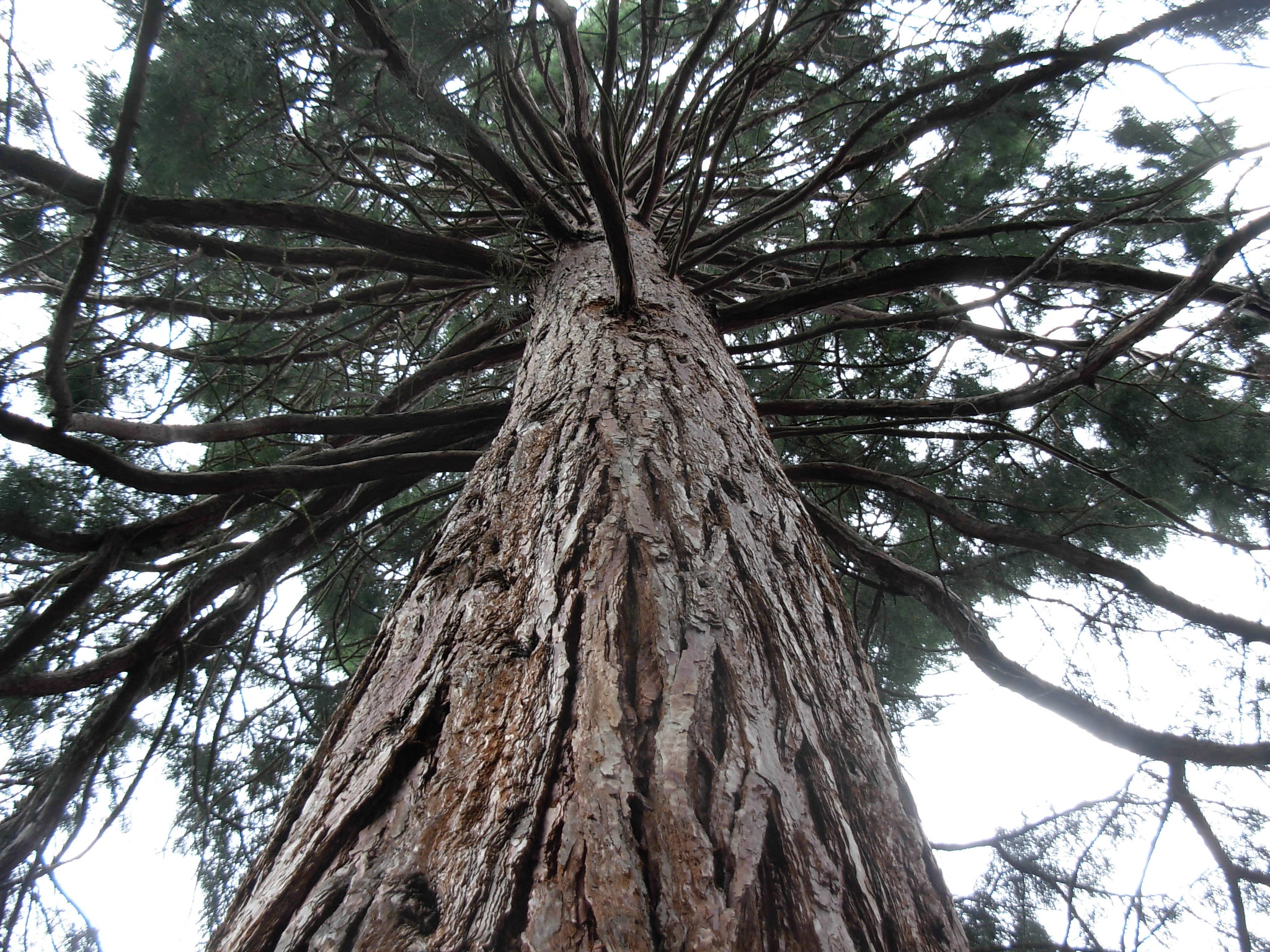
Image - Flickr / brewbooks
La sequoia sempervirens It is an evergreen conifer native to the United States, specifically from Oregon to California. It is a species that can be very tall, since specimens of 115'61 meters have been found tall with a trunk of 7'9 meters in diameter. This trunk is cylindrical and straight, and branches several meters from the ground. The leaves are long and green, between 15 and 25 millimeters long. As for the cones, they are ovoid. It can live about 3200 years.
It is an endangered species. It resists up to -18ºC, but it is not advisable to cultivate in hot or tropical climates since in these areas it grows very, very slowly and usually has a hard time when summer arrives.
Yew (Taxus baccata)
- Image - Wikimedia / Philipp Guttmann
- Image - Wikimedia / Sitomon
El Taxus baccata it is a conifer that has inhabited the Earth for about 200 million years. It is currently growing in Europe and North Africa, reaching measure a maximum height of 28 meters and a trunk diameter of 4 meters. The leaves are dark green, lanceolate and about 4 centimeters long. The aril (that is, what would become the fruit) is cylindrical and red.
The whole plant is very poisonous. Its life expectancy is 4000 years, and it grows in hot and temperate climates with ease, although it is slow. Resists up to -18ºC.
Yours giantthuja plicata)
- Image - Wikimedia / abdallahh from Montréal, Canada
- Image - Wikimedia / Liné1
La thuja plicata It is an evergreen tree that we will find in the western United States. It grows up to 60 meters in height, and its trunk develops to measure 2 meters in diameter. Its foliage is dark green and lustrous, and it produces oval or oblong cones about 1,5 centimeters in diameter.
It lives well in temperate climates, being able to withstand both frosts down to -18ºC and high temperatures of 30-35ºC. It is not demanding in terms of soils, although it prefers those that are rich in organic matter.
Did you like these types of conifers?
